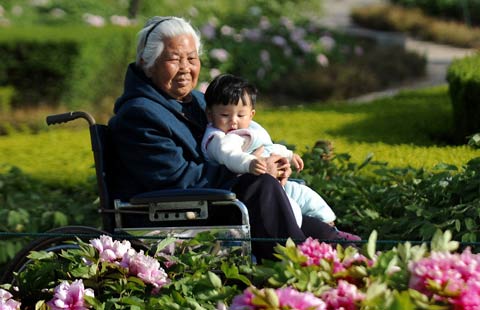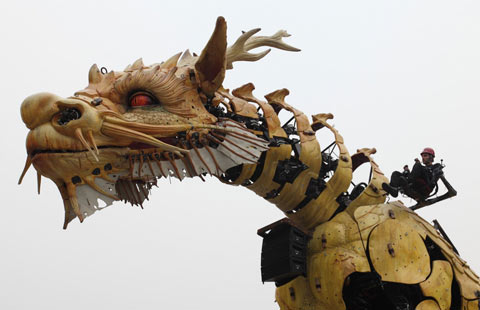Petals of a metaphor
Updated: 2014-10-21 07:17
By Xu Fan(China Daily)
|
|||||||||||
Xu Jiang's new exhibition captures the power of sunflowers in literature and lore. The artist tells Xu Fan about his decadelong fascination with these blossoms.
More than 1,600 aluminum sculptures of sunflowers, as high as 6 meters, stand in a square near the entrance to the National Museum of China.
Almost every visitor is compelled to stop for a look at them. Some may even ask: Why are the plants not bright and blooming as they are usually seen in artistic works?
It is perhaps the question most frequently posed to Xu Jiang, the creator of the sunflowers and president of the China Academy of Art.
Distorted, dark, withered and growing densely, these are the signature features of the sunflowers created by Xu. He likens the struggling characteristics of the commonly seen plants to the spirit of his generation who have experienced the "cultural revolution" (1966-76).
Millions of youths were forced to leave school and sent to work in the country's remote, rural areas during the "cultural revolution".
"The sunflower has particular significance to the Chinese in my cohort," says Xu, 59. His generation views the plant as a symbol of themselves, people who have struggled and now can examine their loss and sufferings from the era.
"In my primary school, sunflowers were the most commonly drawn plant on blackboards. As the plant turns naturally toward the sun at all times, people liken themselves to the flowers," Xu says.
The sun was a common metaphor of Mao Zedong, New China's founding leader.
Related Stories
Money, oil and art 2014-10-11 17:05
Fine art works come to Beijing 2014-10-11 11:41
Golden Eagle TV Art Festival opens in Changsha 2014-10-11 10:06
Zhu Manhua Papercuts Art Gallery in Shandong 2014-10-10 17:06
Today's Top News
Tourists set to travel light overseas
Police hunt for elephant killer
Less shopping, better behavior for Chinese tourists abroad
Bear bites off boy's arm at China zoo
Glance of Central London after autumn rains
Rope-jumpers pictured leaping into crater
Chinese, Italian companies sign $10b
Tony Blair home address discovered in terror suspect's car
Hot Topics
Lunar probe , China growth forecasts, Emission rules get tougher, China seen through 'colored lens', International board,
Editor's Picks

|

|

|

|

|

|





